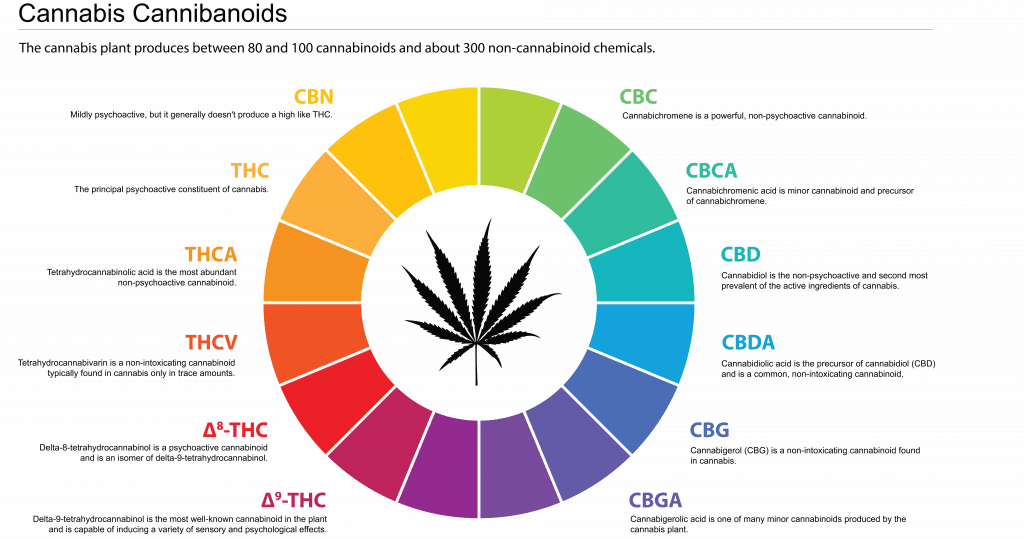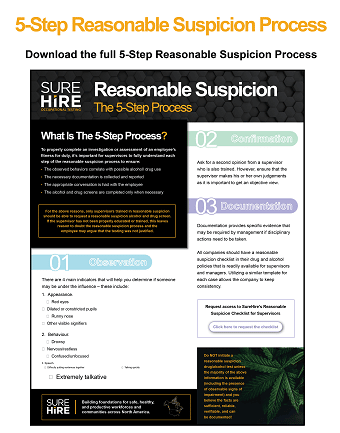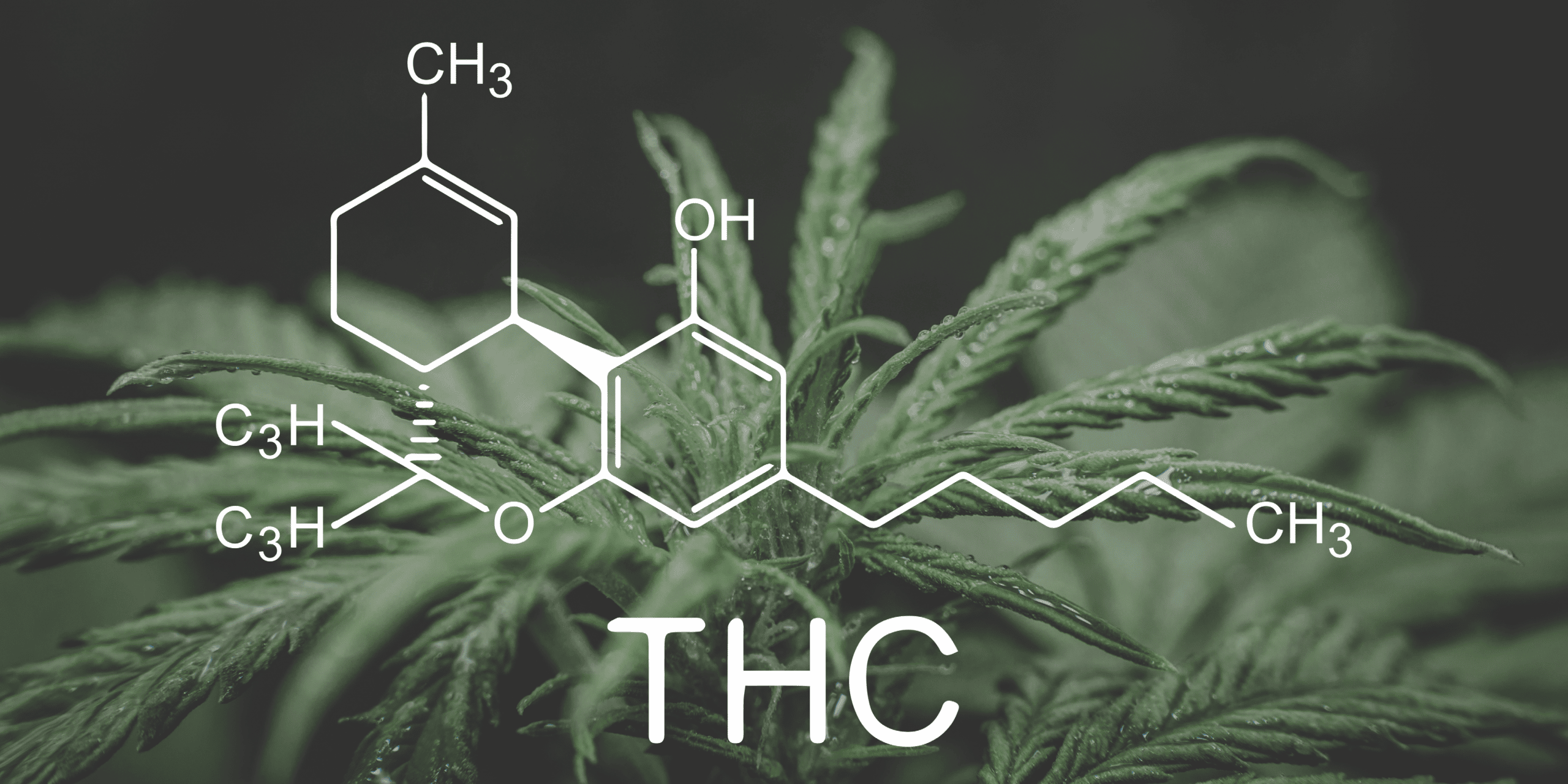KEY TAKEAWAY: Rapidly changing laws and regulations make cannabis consumption an incredibly nuanced topic that employers often find challenging to navigate. In this article, we delve into cannabis metabolites, explaining how the body metabolizes cannabis, the testing methods used to detect cannabis impairment, and recent trends in cannabis impairment testing that many employers are shifting towards.
In recent years, cannabis consumption has become legalized in more and more places. The rapidly changing laws and regulations make cannabis consumption an incredibly nuanced topic, and the implications of legalization for workplaces can become complex and confusing. Comprised of many components, cannabis has both medicinal and recreational uses.
Given the increasing legalization of cannabis, coupled with the fact that it remains one of the most widely abused substances globally, employers need to know some of the basics about it. Understanding how cannabis metabolizes in the body is one important area of knowledge.
Basic knowledge of cannabis metabolites allows employers to make informed decisions around accurate drug testing methods and helps form the foundation for a solid workplace drug and alcohol policy and program. Having an understanding of cannabis metabolites is one small piece in the puzzle of keeping workplace safety at the forefront of your organization.
THC and Metabolites

Cannabis preparations that contain THC (tetrahydrocannabinol) can produce profound and immediate euphoric effects. THC is known to be the main psychoactive substance in cannabis. In other words, it’s the component of the plant that gives the person consuming it a “high.” THC is present in significant levels in common recreational cannabis preparations such as marijuana and hashish.
THC is known as the “parent” drug of cannabis. It’s the main substance in the cannabis plant that drug testing is looking to detect, albeit in an indirect way. Since half of the dose is already cleared from the body within 30 minutes, the presence of THC cannot be detected in urine. However, once the euphoric effects of cannabis wear off, metabolites remain in the body. These are essentially chemical remnants of the plant. The presence of THC metabolites offers a reliable indicator that a person has consumed the parent drug.
A metabolite forms when a substance breaks down into the body. Basically, it means that the parent drug has been turned into something else. Because THC metabolites remain in the body much longer than THC itself, drug tests for cannabis are used to detect THC metabolites. Drug testing kits could still be named with the parent drug, even though they’re testing for metabolites.
The main metabolite of THC is tetrahydrocannabinol carboxylic acid (THC-COOH). It is also referred to as 9-carboxy-THC (11-nor-9-carboxy-▵ 9 -tetrahydrocannabinol).
How Long Does Cannabis Stay In An Individual’s Body?
Although the euphoric feelings of cannabis wear off quickly, the drug remains in an individual’s body for much longer. Within a few hours of cannabis consumption, metabolites can be detected in a person’s urine. The presence of cannabis metabolites can continue to be detected up to a few days after a single dose of THC, or up to 30 days following heavy usage of the drug.
Several factors determine whether cannabis will be detected in a person’s body and how long it can be detected. These include:
- The frequency of consumption
- Dosage levels
- How long ago the drug was last consumed
- The sensitivity of the drug test used
- Body composition, specifically body fat levels of the person (because THC binds to fat in the body)
- Individual differences in metabolism
- How long the person has been a cannabis user (since the effects of THC are cumulative)
Testing Methods for Cannabis
Cannabis metabolites can be detected in hair, saliva, blood, fingernails, and urine. Therefore, there are many ways to test for cannabis use. Of all the cannabis testing methods available, urine testing is the preferred method. This is due to ease of sampling, alongside a higher concentration and longer window for metabolite detection.
Urine tests to detect cannabis use
It is important to realize that urine tests for marijuana metabolites do not show current intoxication or impairment. Urine-based tests such as the 8-panel drug test can be used to identify the presence of cannabis metabolites. If a positive test result is obtained, it should then be confirmed with another more specific and confirmatory testing method.
Urine testing isn’t as reliable for cannabis users who use vaping devices. In a study of cannabinoid metabolites present in the urine of medicinal cannabis users, the detection was more likely in those who used oral and smoked products than in those who used vaped products. You can also find out more about a specific type of oral cannabis product, edibles, in “Pot Topics: Cannabis 2.0”.
Other types of cannabis tests
Saliva and blood tests can both identify cannabis use for a short period of time after use. Saliva tests are also known as oral fluid testing. They can detect marijuana for 1-3 days after use. However, unless a lab-based test is used, they are generally not sensitive enough to be used as a reliable testing method for marijuana.
Although blood tests can also detect cannabis use, the detection window is limited, at just 3-4 hours. This type of testing could be used to determine whether an individual is currently impaired by THC in the workplace, but isn’t a common testing method. Breathalyzers are also now able to detect the presence of THC on a person’s breath and offer a new possibility for testing THC intoxication; however, employers must keep the limitations of these technologies in mind. (For more information, click here to join our webinar on the Post Apocalyptic Workforce).
Conversely, hair follicle tests for THC offer the longest window for detection at up to 90 days. However, these tests can sometimes produce a false-positive result. All testing methods have their merits and downsides. The method of cannabis use (e.g. smoking, vaping, or edibles) will also have an impact on the reliability of the testing method.
Preparing for a Successful Workplace Drug Testing Program
Occupational testing for cannabis remains complex on many levels and there are several ways to approach it. In general, the focus may be moving towards testing for THC impairment in the workplace as opposed to testing for inactive metabolites.
There are several steps that employers can take to implement a successful drug-testing program that considers cannabis use and impairment. These include:
- Having a clearly defined and up-to-date workplace marijuana policy
- Understanding medical marijuana from a workplace context, including use and concerns, and the potential impact on your workplace
- Considering the implications of off-duty marijuana consumption
- Ensuring up-to-date knowledge about the legalization of marijuana and how to approach these legalities from a workplace standpoint

When you suspect that someone may be under the influence of alcohol and/or drugs at work or may have a substance abuse issue, you have an obligation to report it. It’s common to try and protect the suspected worker by making their work tasks easier and avoiding confrontation but you are only endangering yourself and others by helping someone hide impairment in the workplace. The longer the problem goes on without intervention, the more opportunity there is for a safety incident to occur.
To properly complete an investigation or assessment of an employee’s fitness for duty, it’s important for supervisors to fully understand each step of the process to ensure:
- The observed behaviours correlate with possible alcohol and/or drug use
- The necessary documentation is collected and reported
- The appropriate conversation is had with the employee
- The alcohol and drug screens are completed only when necessary
Learn more about the 5-Step Reasonable Suspicion Process, and click here to download SureHire’s 5-Step Reasonable Suspicion Process.
Written by Elly McGuinness
Elly has been inspiring people to make sustainable changes to their health, fitness and lifestyle for the past 15 years. She offers online solutions for people who are looking to get started on, or improve their health and fitness. She blogs regularly, writes for a number of health and well-being publications and is the published author of a holistic weight loss book.
You may also be interested in…
- Pot Topics: Drug Testing Myths Exposed
 When it comes to drug testing, there are a number of common myths out there to weed through—pun intended. In this article, Subject Matter Expert, Wayne St. John, debunks 5 common drug testing myths that continue to cause much confusion in the industry.
When it comes to drug testing, there are a number of common myths out there to weed through—pun intended. In this article, Subject Matter Expert, Wayne St. John, debunks 5 common drug testing myths that continue to cause much confusion in the industry. - 6 Remote Workforce Issues & Solutions
 Managing a remote workforce? Us too! Distributed teams, co-working spaces, telecommuting, working from home, and flextime policies — chances are at least one, if not all, of the teams you will manage in your career will be working from a remote location and probably several remote locations. Here’s how to deal.
Managing a remote workforce? Us too! Distributed teams, co-working spaces, telecommuting, working from home, and flextime policies — chances are at least one, if not all, of the teams you will manage in your career will be working from a remote location and probably several remote locations. Here’s how to deal. - The Importance of Driving Safely!
 Vehicle collisions are responsible for 50 million injuries and 1.35 million fatalities annually…
Vehicle collisions are responsible for 50 million injuries and 1.35 million fatalities annually… - 9 Keys to an Effective Drug and Alcohol Policy
 Having a well-documented policy is critical to building a culture of safety excellence. So what makes a good policy?
Having a well-documented policy is critical to building a culture of safety excellence. So what makes a good policy? - DOT or Non-DOT Testing
 Whether you are operating in Canada or in the U.S., as an employer, you have a legal responsibility to…
Whether you are operating in Canada or in the U.S., as an employer, you have a legal responsibility to…

